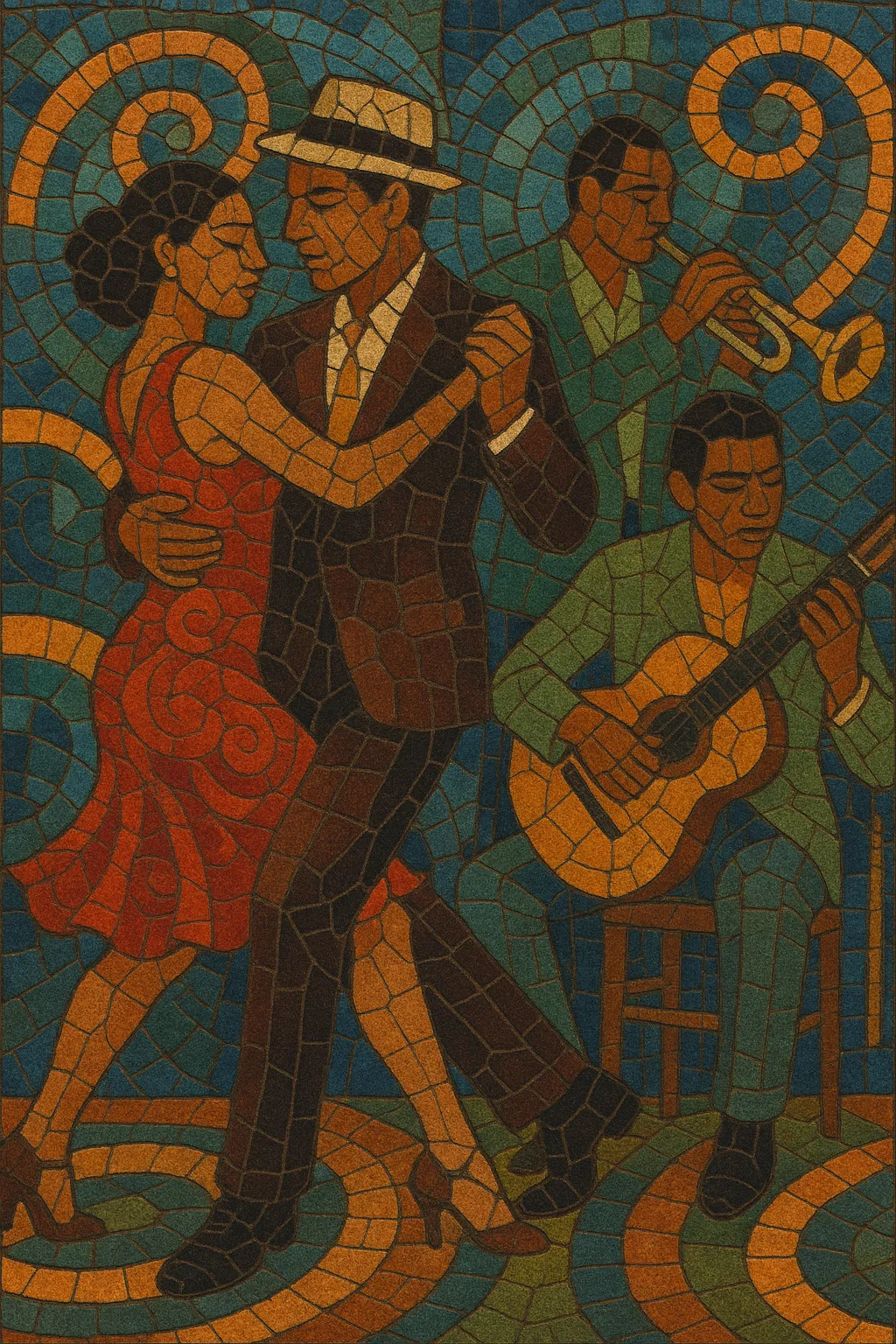Samba de gafieira is the ballroom-oriented form of samba that crystallized in Rio de Janeiro’s dance halls known as gafieiras. It adapts urban samba into a smooth, swinging, partner-dance format with crisp phrasing, rich horn arrangements, and a steady, syncopated 2/4 pulse designed for flowing footwork and dramatic breaks.
Musically, it blends the melodic sophistication of choro and the sensual lilt inherited from maxixe with big-band/swing orchestration. Typical ensembles feature a brass and reeds front line over a samba rhythm section (guitar, cavaquinho, bass, drums, and pandeiro), creating an elegant yet energetic sound perfect for social dancing.
Samba de gafieira emerged in Rio de Janeiro’s urban nightlife as samba left the streets and morros for indoor dance halls called gafieiras. Dancers and musicians adapted the lively samba into a partner-dance format, drawing on the melodic intricacy of choro and the sensual, European-influenced syncopations of maxixe. Early orchestras began arranging samba for horn sections, aligning with contemporary swing and big band aesthetics.
As gafieira culture flourished, large dance orchestras became the norm. Bands like Orquestra Tabajara popularized a sophisticated style: brass and reeds played punchy riffs, while rhythm sections provided a supple, syncopated 2/4 groove. The repertoire included sambas tailored for the dance floor, often using radio-friendly song forms (e.g., AABA), clear 8-bar phrasing for figures, and dramatic breaks to highlight cuts (cortes) and ganchos.
While bossa nova and other trends rose, the gafieira tradition continued in ballrooms and clubs, influencing musicians who later fused samba with jazz harmony and improvisation (samba-jazz), as well as artists who reframed samba for new dance and pop contexts. The style’s arranging language—tight horn voicings over a buoyant samba groove—remained a reference for Brazilian dance bands.
Dance schools, retro dance nights, and neo-gafieira projects revived the form, keeping its social-dance essence intact. Modern ensembles respect classic arranging and phrasing while updating harmony, repertoire, and recording aesthetics. Today, samba de gafieira is both a living ballroom tradition and a blueprint for elegant, dance-centric samba arrangement.


